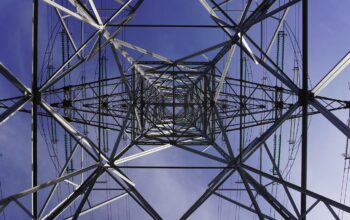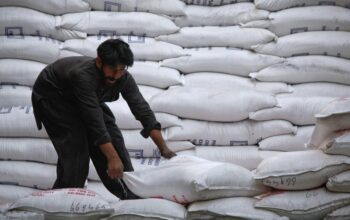By Staff Reporter
KARACHI South and southwestern Pakistan that have been drenched in rain for days, braced for more heavy downpours on Saturday as the death toll from flooding across the country rose to over 120 while thousands were left marooned or homeless in low-lying areas, officials said.
A wild weather system that dumped more than a year’s worth of rainfall over a week in the country’s south brought widespread destruction, leaving thousands of people displaced and sweeping away property, livestock and roads.
Pakistan is hit by the worst monsoon floods in the country’s recent history.
Hundreds of policemen and army personnel have been deployed to parts of the country to help rescue efforts, witnessed said.
Urban flooding was reported in several areas in the country’s commercial hub. Streets in many parts of Karachi were inundated with rainwater coming up to the waist stranding people inside their houses. In northern parts of the city, water entered houses.
Weather officials said rains were likely to persist in Karachi and other parts of Sindh as a strong monsoon system and its currents were penetrating from the Arabia Sea.
Offices forecast more rains during Eidul Azha, which will be celebrated across Pakistan from today and alerted authorities to exercise caution.
Minister for Climate Change Sherry Rehman said Sindh and Balochistan were going through very high levels of rainfall on a 30-year average.
The recent rains in Pakistan were 87 percent heavier than the average downpour. The country has experienced increasing extreme weather in recent years, causing large-scale damage. Environmentalists warn climate change could lead to more disasters, especially in low-lying and densely populated areas.
Government officials linked the new pattern to the changes in climate, saying Pakistan should be ready to face more flooding because the country’s glaciers are melting at a faster pace. That’s causing flash floods that have damaged infrastructure.
Every year, many cities in Pakistan struggle with the annual monsoon deluge, drawing criticism about poor government planning.
The season runs from July through September and experts say rains are essential for irrigating crops and replenishing dams and other water reservoirs in Pakistan.
Some of the areas in southern Pakistan have faced drought since earlier this year. Sindh has received 261 percent more rains than average while Baluchistan has received 274 percent, which is the highest so far.
Copyright © 2021 Independent Pakistan | All rights reserved




